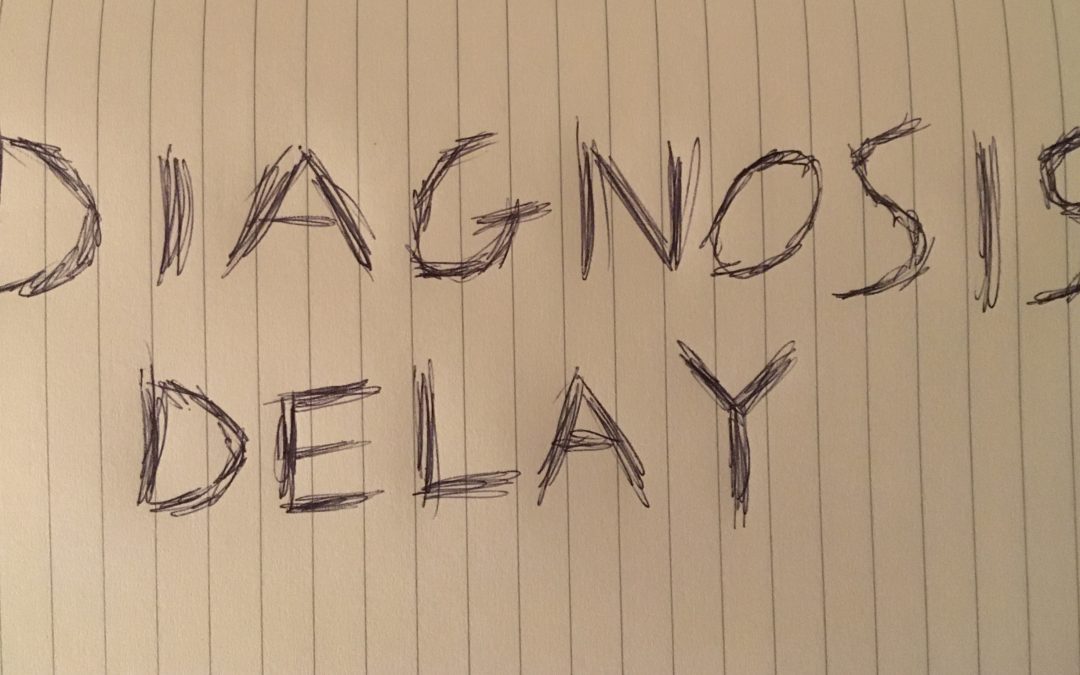So, I went to Keele University recently to attend a discussion on axial SpA and why there are often delays in diagnosing someone with the condition. It was a really interesting and eye-opening session for me. While I really want to report my experience, I obviously need to keep the details vague as this was a closed session and the information shared is therefore confidential.
I was invited along with a handful of other sufferers of axial SpA (AS). The first thing I noticed was that I was the youngest person in the room and had been living with my arthritis for a lot less time than the rest of the group. I’ll be honest I was worried about getting side-lined because of my age, but I was happy to be proven wrong and we were all very respectful of one another and listened to what everyone had to say.
A part of me thought I maybe shouldn’t have been there, because whilst there was a slight delay in my diagnosis, it’s nothing compared to what these people have been through.
This made me even more aware of how lucky I have been to be diagnosed so quickly, because there is more knowledge and research and tests available now compared to when some of the group first started showing symptoms. Saying that, awareness and knowledge is still something we talked about as a reason for delay.
Axial SpA is not a well-known condition. There isn’t a lot of awareness around it. Therefore, a person could have some of the symptoms and not know to even think about the possibility of axial SpA until more appear and things worsen. It’s not just about the patient’s knowledge and judgement, but also that of some medical practitioners. Again, more is available now than in previous years, but axial SpA is a complicated condition and can get mistaken for other conditions and from listening to the discussion, a common one is fibromyalgia. (Note: there are a number of diseases that can develop alongside axial SpA, which creates even more complications when trying to reach a diagnosis).
I’m not sure whether this comes under a lack of knowledge and judgement or whether it’s a pride thing as a medical professional (I’d like to be clear: I’m not grouping all medical professionals together here. I have had some bad experiences along the way, but I know only a small amount are actually like this). In some cases, there is genuine resistance to the idea that a patient might have axial SpA, leading a patient to seek a second opinion. This behaviour has in the past led to delay in diagnosis. Patient pride is an important aspect in the length of the journey to diagnosis. With symptoms such as aching, stiffness and fatigue; one might just put it down to a tough week and think that everyone gets like that, which isn’t necessarily wrong, but when it happens regularly and gets severe it’s harder to ignore no matter how much you might want to pretend that you’re like everyone else.
We think we’re strong for pushing through and ignoring things, but it’s not weak to ask for help.
In terms of my own road to diagnosis I had one symptom for a while at the beginning and I saw a GP who referred eventually referred me to a foot specialist. The cause of this symptom was thought to be (and technically rightly so) due to an underlying condition and my working situation. I developed achilles tendonitis in my left foot. I have slightly too much heel bone in that foot and at the time I was working in a pub where the majority of the pint glasses I needed to serve drinks in were on a high shelf that caused me to be regularly moving up and down on my tip toes. The thought was that this regularly repeated movement was causing the heel bone to rub against and damage my achilles tendon. The treatment that I received was shockwave therapy on the back of my heel to re-injure the tendon to stimulate healing (yes that does sound insane).
This worked for a short while until my limp returned (my tendon was so inflamed due to the axial SpA that it was just rubbing against the bone) and inflammation throughout my body caused pain and restricted movement in my arms, neck, back, legs, feet (just all over). I was then sent (by a different GP) for X-rays and blood tests and it was only because I had inflammatory markers in my bloods the axial SpA (at the time referred to as non-radiographic ankylosing spondylitis) was even mentioned as a possible diagnosis.
I was told twice that I probably had axial SpA, but neither the GP nor the consultant I saw could actually diagnose me.
It wasn’t until I met my trial doctor that I got a proper diagnosis (I also went for an MRI that lit up like a Christmas tree showing inflammation). Anyway, the point that I’m trying to make is that the way the symptoms present themselves can actually delay diagnosis, either because they get treated individually instead of being considered part of something bigger, or they lead to a misdiagnosis.
The discussion was very interesting, and it was my first time properly meeting other people with axial SpA. I found it beneficial getting to listen to other patients and their experiences not only with diagnosis, but how they live with it. It made me aware of my own naivety regarding the condition and caused me to think about how I should take care of myself post drug trial and as I get older. I was happy to get involved in the discussion and I hope we were all able to contribute to helping cases of axial SpA diagnosed and appropriately treated quicker. I hope I can be a part of future discussions about axial SpA and that I can be of help to other sufferers, particularly those around my age or younger. It is scary and confusing and I hope I can provide some understanding as to why their body might not be working the same as everyone else’s their age and how to deal with that information (something I’m still learning to do myself).
By Jack Posnett



